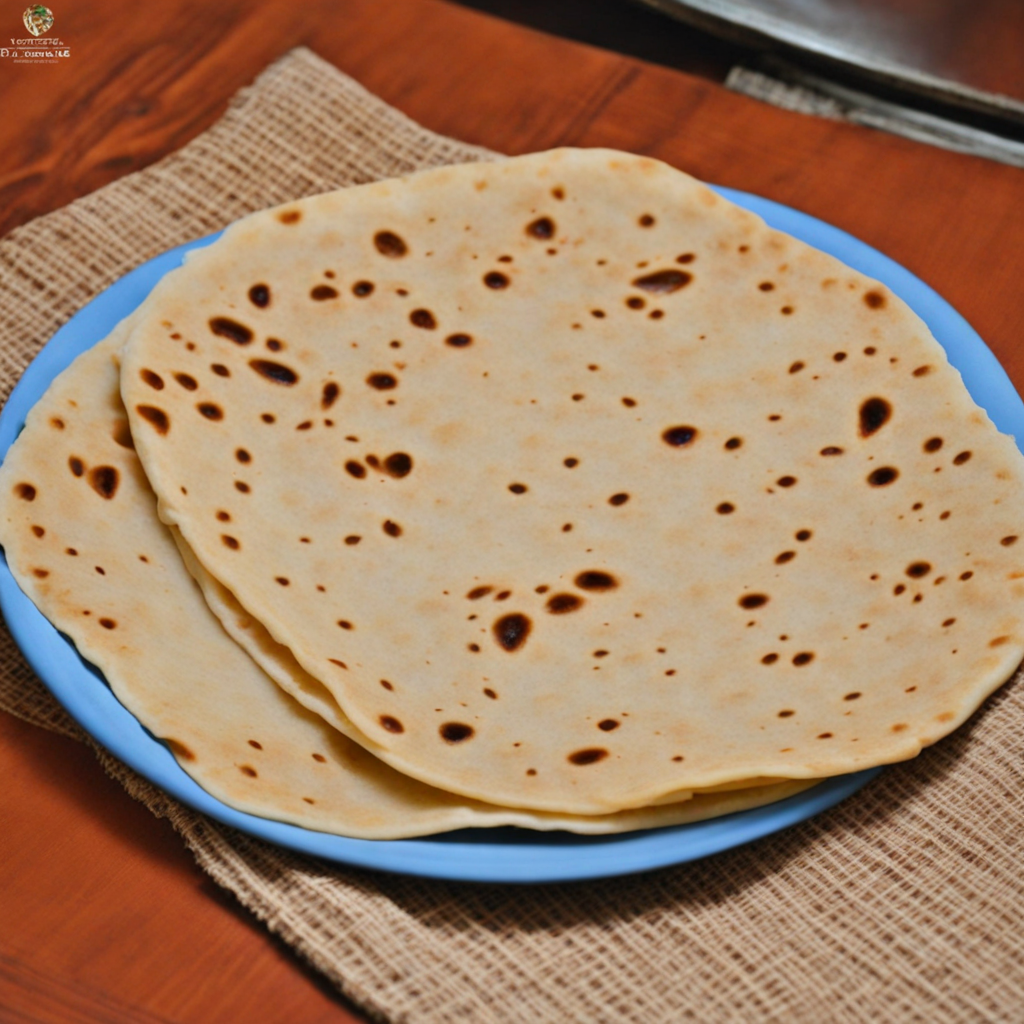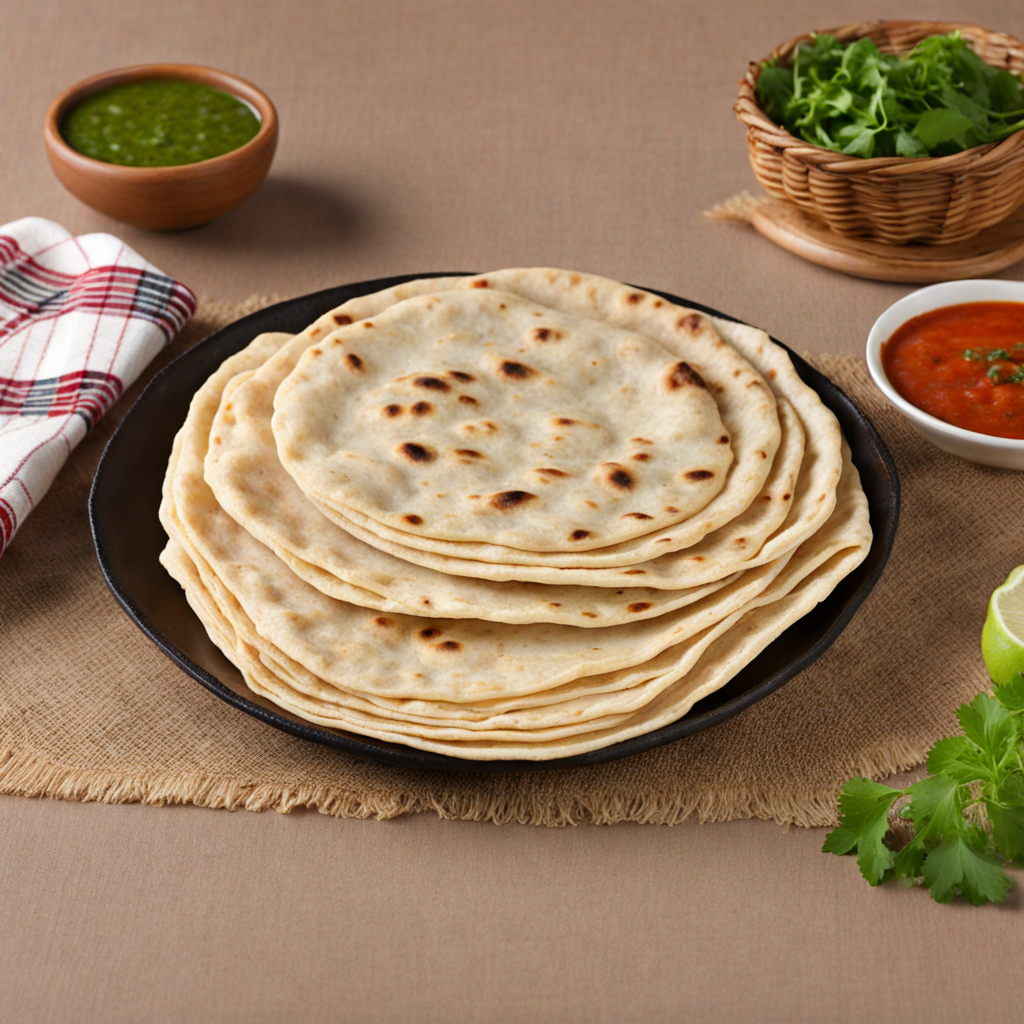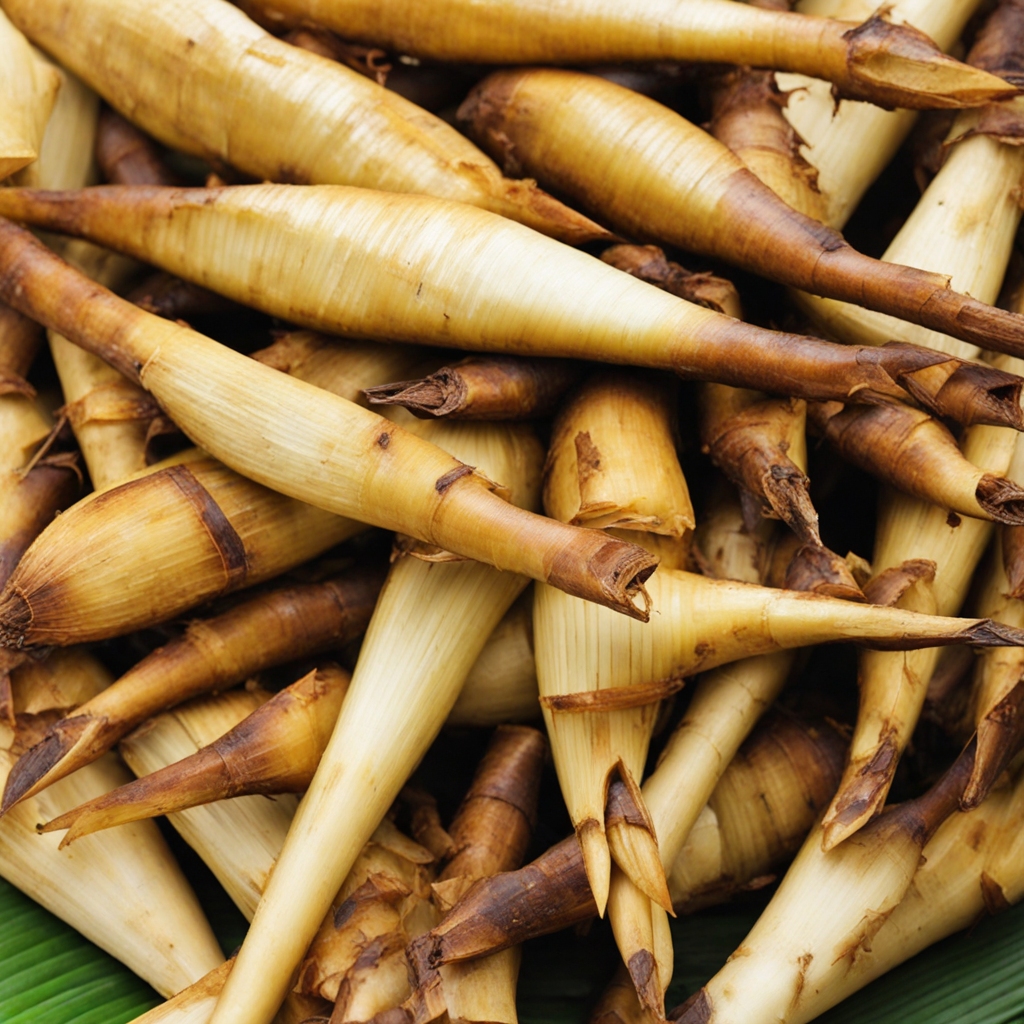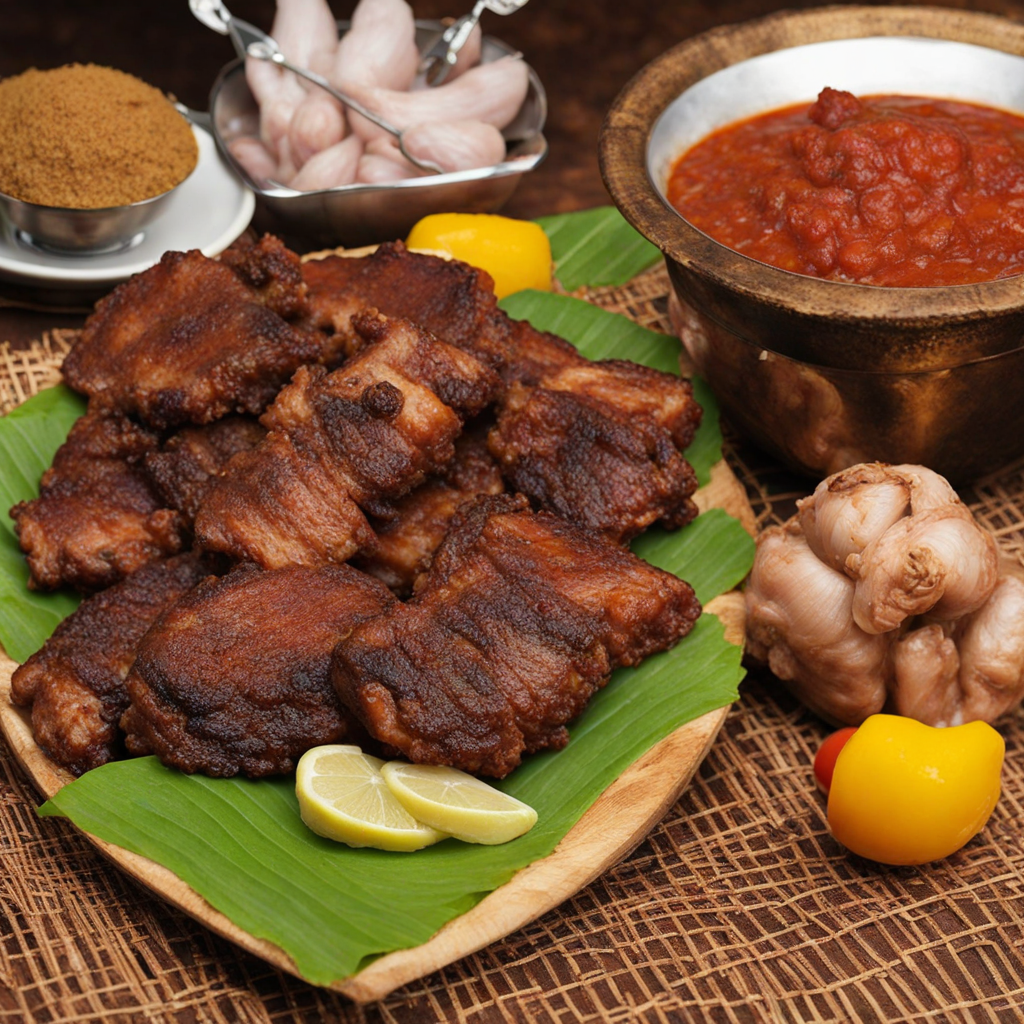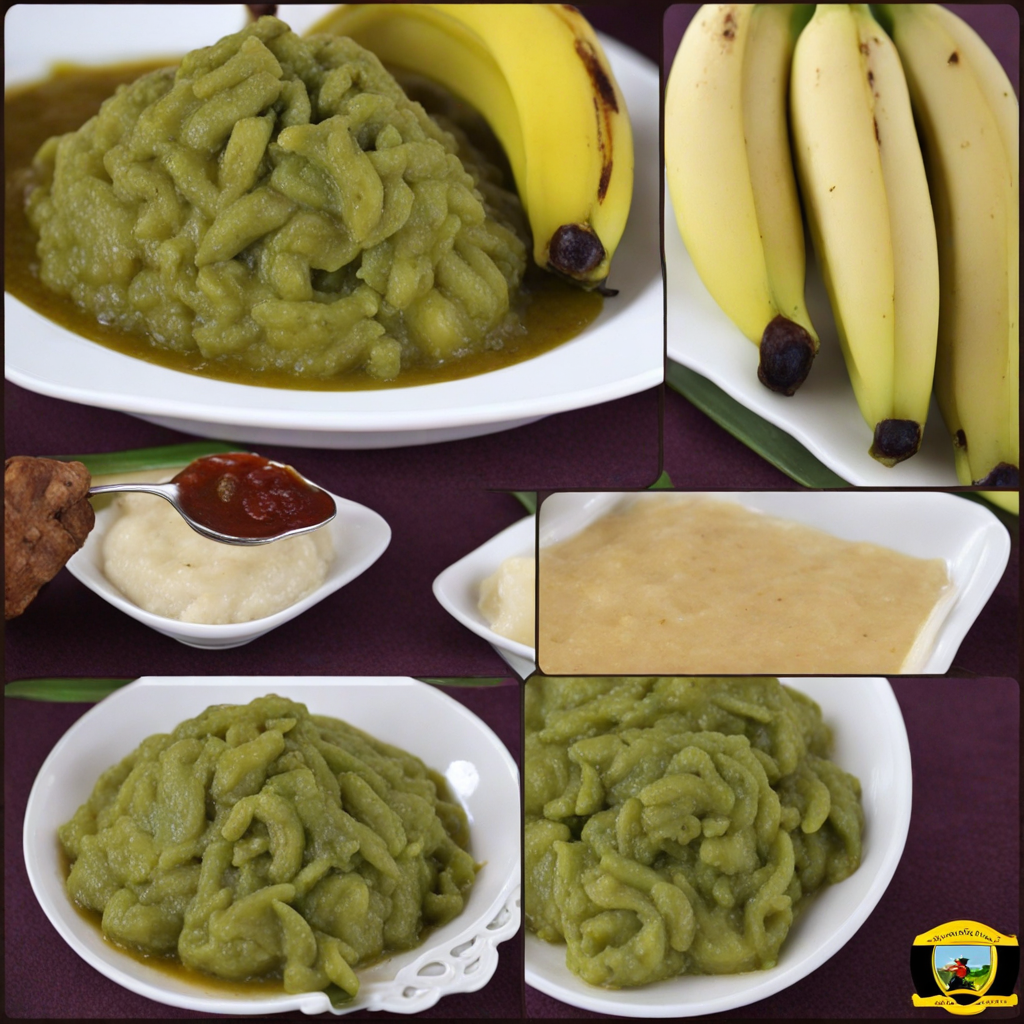Chapati
Chapati is a delightful flatbread that hails from Uganda, characterized by its soft, chewy texture and slightly crispy edges. Made primarily from wheat flour, water, and a pinch of salt, the dough is kneaded until smooth and then rolled out into thin circles before being cooked on a hot griddle. The cooking process gives chapati its signature golden-brown color, while its flexible nature makes it perfect for scooping up various dishes. The aroma of freshly cooked chapati is inviting, and its mild flavor serves as a versatile accompaniment to many Ugandan meals. This beloved staple is often enjoyed alongside flavorful stews, grilled meats, or vegetable dishes, allowing it to absorb the rich sauces and spices of the accompanying food. Chapati can be served plain or brushed with a little butter or ghee for added richness. It is a common sight at family gatherings and celebrations, showcasing its role as a food that brings people together. The joy of tearing off a piece of chapati and using it to savor a hearty meal is an experience that embodies the spirit of Ugandan hospitality. In addition to its traditional uses, chapati has also evolved in urban areas, where it may be filled with various ingredients like beans, eggs, or vegetables, creating a delicious street food option. This flexibility not only highlights the adaptability of chapati but also makes it a beloved comfort food for many. Whether enjoyed in its classic form or as a modern twist, chapati is a must-try dish for anyone looking to explore the rich flavors of Ugandan cuisine.
How It Became This Dish
The History of Chapati in Uganda: A Culinary Journey #### Origins of Chapati Chapati, a staple flatbread in Uganda, has a rich and multifaceted history that transcends national borders. Its origins can be traced back to the Indian subcontinent, where flatbreads like chapati, roti, and naan have been integral to the culinary landscape for centuries. Chapati is believed to have originated in the Indian state of Punjab, where wheat cultivation flourished, giving rise to various forms of unleavened bread. The word "chapati" itself is derived from the Hindi word "chapat," meaning "to slap," which refers to the technique of shaping the dough by hand. The introduction of chapati to Uganda can be attributed to the Indian diaspora that began in the late 19th and early 20th centuries. During British colonial rule, laborers from India were brought to Uganda to work on the construction of the Uganda Railway and other infrastructure projects. These migrants brought with them their culinary traditions, including chapati, which quickly gained popularity among the local population. #### Cultural Significance In Uganda, chapati has evolved from its Indian roots to become a beloved element of the national cuisine. Its significance extends beyond mere sustenance; chapati embodies a fusion of cultures, representing the harmonious blending of Indian and Ugandan culinary practices. The flatbread is particularly popular in urban areas and among various ethnic groups, including the Baganda, Basoga, and Banyankole, where it is often served alongside traditional dishes such as stews, vegetables, and meats. Chapati has become a symbol of communal dining and hospitality in Uganda. It is often prepared for gatherings, celebrations, and special occasions, reflecting the warm hospitality of Ugandan culture. The act of sharing chapati among family and friends creates a sense of unity and togetherness, reinforcing social bonds. In many households, chapati is a favorite breakfast item, served with a variety of accompaniments such as beans, eggs, or tea, making it a versatile addition to the Ugandan diet. #### Development Over Time As Uganda's culinary landscape has evolved, so too has the preparation and consumption of chapati. Initially, chapati was made using whole wheat flour, water, and a pinch of salt, following traditional Indian methods. The dough was rolled out into thin discs and cooked on a hot griddle, or "tava," until golden brown. However, over time, variations emerged to cater to local tastes and ingredient availability. One significant adaptation of chapati in Uganda is the incorporation of local ingredients. While the traditional Indian version may use ghee or oil, Ugandan cooks often use vegetable oils or margarine, making the bread more accessible and affordable for the average household. Additionally, chapati can be enriched with ingredients like milk or yogurt to enhance its flavor and texture, producing a softer and more pliable bread. The cooking techniques have also evolved, with many Ugandan households opting for gas stoves or electric hot plates instead of traditional charcoal stoves. This shift has made chapati preparation more convenient and less time-consuming, allowing families to enjoy this beloved flatbread more frequently. Moreover, chapati has found its way onto the menus of restaurants and street food vendors across Uganda, reflecting its growing popularity. Street vendors often serve chapati with an array of fillings and toppings, such as spiced meat, vegetables, or sauces, transforming it into a quick and satisfying meal for busy urban dwellers. This street food culture has further solidified chapati's status as a beloved snack or meal option. #### Chapati in Modern Ugandan Society In contemporary Ugandan society, chapati has transcended its status as a simple flatbread to become a culinary icon. It is often featured in social events, from weddings to birthdays, where it is served alongside an array of dishes, highlighting its versatility. The bread has also become a popular item for takeout, appealing to the fast-paced lifestyle of urban residents. The globalization of food culture has also influenced the way chapati is perceived and consumed. As Ugandans travel abroad or interact with diverse communities, they bring back new ideas and recipes, leading to innovative interpretations of chapati. Fusion foods, such as chapati wraps filled with Western-style ingredients, demonstrate how chapati continues to evolve while retaining its fundamental identity. Moreover, the growth of culinary tourism in Uganda has placed chapati at the forefront of the nation’s gastronomic offerings. Tourists seeking an authentic Ugandan experience often seek out local dishes, and chapati serves as a gateway to understanding the intricate tapestry of Ugandan culture. Cooking classes and food tours frequently include chapati-making sessions, allowing visitors to engage hands-on with this cherished culinary tradition. #### Conclusion The history of chapati in Uganda is a testament to the power of food as a cultural connector. From its origins in the Indian subcontinent to its adaptation and integration into Ugandan cuisine, chapati embodies the complexities of cultural exchange and the evolution of culinary practices. It serves as a reminder of the rich tapestry of influences that shape the food we eat and the communities we inhabit. As Uganda continues to embrace modernity while honoring its culinary heritage, chapati remains a beloved staple that brings people together, fostering a sense of community and shared experience. Its journey from a simple flatbread to a symbol of hospitality and cultural fusion underscores the importance of food in shaping identities and building connections across generations and borders. Whether enjoyed at home, on the streets, or in restaurants, chapati will undoubtedly continue to hold a special place in the hearts—and stomachs—of Ugandans for years to come.
You may like
Discover local flavors from Uganda


